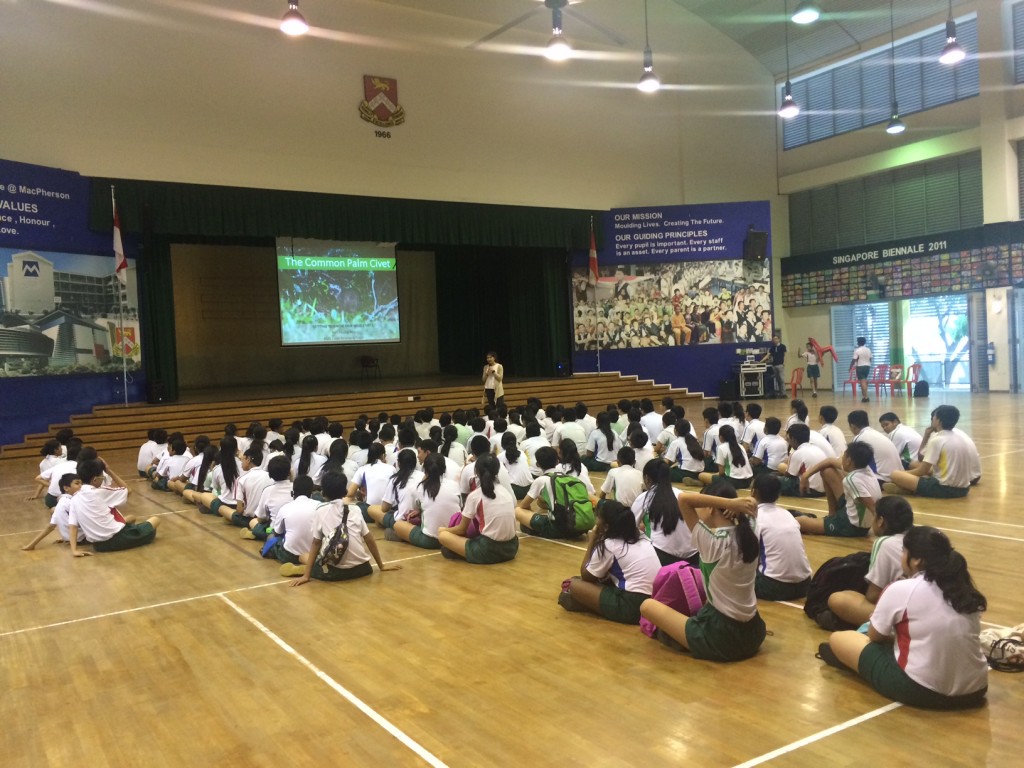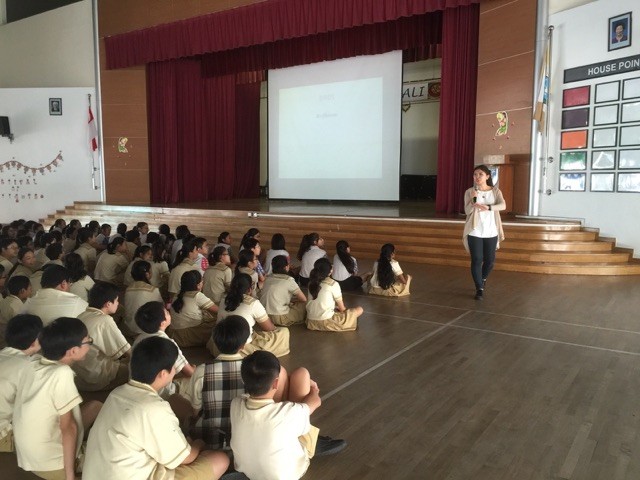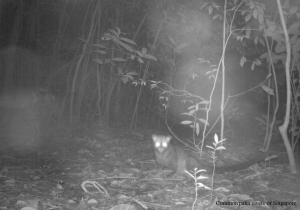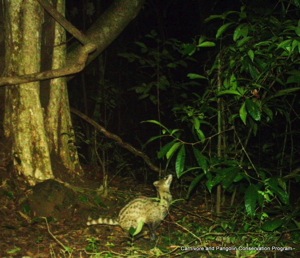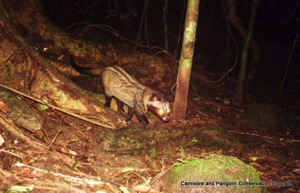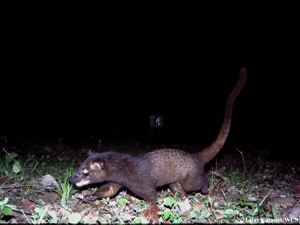By Claudia Ang
The NUS Civet Research Team has been amping up its efforts to provide school talks island-wide, in hopes that students growing up in Singapore will be better equipped with a knowledge and appreciation for the common palm civet, one of the country’s last wild urban native carnivores. The team’s researchers, Xu Weiting and Fung Tze Kwan, both of whom are NUS Toddycats, have carried out research on the distribution, biology, and diet of the civets in Singapore. The presentations and exhibition are thus supported by the scientific research work which the team does. The talks are conducted by the two researchers and civet intern, Claudia Ang. From mid 2015, there have been plenty of talks and events that are scheduled for the coming months, but here is an overview of what we have done so far:
31 July 2015 – Presentation and Booth at Victoria Junior College Science Carnival
As part of the East Zone Science Carnival held by VJC, we had a specimen booth which illustrated the story of Singapore’s biodiversity. Weiting also gave a talk on raise awareness for the civet as one of Singapore’s last urban mammal. Having been there for five hours, the team managed to reach more than 150 students.
19 October 2015 – School Presentation at Victoria School
School talks cover the biology of the civet, its behavioural adaptations, and the threats that it faces in urban Singapore. Students also learn some ways in which they can help the civet, both locally and regionally. This was a talk given to a cohort of 300 secondary two Victoria School students.
16 November 2015 – School Presentation at MacPherson Primary School
This was a presentation at MacPherson Primary School, where we reached out to 130 students. There is usually a QnA session at the end of the talk, where students can take the opportunity to clarify their doubts or request for more information on issues that have piqued their interest.
18 November 2015 – School Presentation at West Grove Primary School
In that same week, we were invited to present at West Grove Primary School, where 300 students attended the talk.
2 February 2016 – Talk for Cnergy Programme students at Catholic High School
 We had our very first talk of 2016 at Catholic High School, where we presented to a group of Integrated Programme students. It was a small group of approximately 20 students, who showed a developed interest in animal welfare issues. Many of them were also interested in seeking out opportunities to volunteer/work in for environmental conservation organisations too.
We had our very first talk of 2016 at Catholic High School, where we presented to a group of Integrated Programme students. It was a small group of approximately 20 students, who showed a developed interest in animal welfare issues. Many of them were also interested in seeking out opportunities to volunteer/work in for environmental conservation organisations too.
5 February 2016 – Talk for Green Group students at Mayflower Primary School
 We had presented on civets and the native biodiversity to approximately 35 students part of the school’s environmental group. The students were highly engaged and gave excellent learning points gleaned from the short presentation.
We had presented on civets and the native biodiversity to approximately 35 students part of the school’s environmental group. The students were highly engaged and gave excellent learning points gleaned from the short presentation.
18 February 2016 – School talk at Methodist Girls’ School
 We presented on the biology and threats to civets as a link to the 210 secondary 1 students’ recent lesson on biodiversity and its importance to man. During the presentation, we also included a section on the importance of forests such as MacRitchie and the Cross Island Line issues which are important to both the civets and us.
We presented on the biology and threats to civets as a link to the 210 secondary 1 students’ recent lesson on biodiversity and its importance to man. During the presentation, we also included a section on the importance of forests such as MacRitchie and the Cross Island Line issues which are important to both the civets and us.
1 & 3 March 2016 – School talks at Hai Sing Catholic School
We visited Hai Sing Catholic School on two occasions to present to their lower secondary and upper secondary students respectively, reaching approximately 1200 students in that week.
29 March 2016 – Assembly talk for Upper Secondary Lower Peirce Secondary
 We visited Lower Peirce Secondary to raise awareness on civets and other common wildlife in Singapore to 340 upper secondary students. They enjoyed the talk and learnt new and interesting information about our local biodiversity.
We visited Lower Peirce Secondary to raise awareness on civets and other common wildlife in Singapore to 340 upper secondary students. They enjoyed the talk and learnt new and interesting information about our local biodiversity.
While we are warmed by the positive responses received from the students, much more has to be done to increase awareness of the civets and Singapore’s biodiversity to allow for better, more efficient conservation to happen. With all the presentations conducted and soon-to-happen, we hope that students inculcate within them a sense of pride in Singapore’s vibrant landscape and rich biodiversity, and thus a sense of protection for their environment. If you are interested in finding out more on what the NCRT does, do visit their website at https://blog.nus.edu.sg/singaporecivet/the-civet-team/ or write to us if you want our team to visit your school or event!



